In this Article:
In this cartridge comparison, we are going to take a look at two of the most popular and widely used hunting cartridges in the United States, the .270 vs .30-06.
Both of these cartridges come with a loyal following that will argue until their last days as to why their cartridge is the best available. What we will see is that these are two cartridges that are very similar and we have to look at the details to understand under which situations one might have the edge over the other.
In this article, we will take a look at these cartridges and discuss under which situations one cartridge might serve you better than the other. There is no winner in our opinion. Both can be effective in very similar conditions, and we think your preference and confidence with a cartridge is just as important as the small differences, especially when comparing two that share many similarities as these do.
Before fully jumping in we do want to mention a disclaimer. We are going to be comparing only a limited number of different rounds for each cartridge. While we are selecting a variety of rounds with a good range of bullet weights and designs, it’s only scratching the surface. There is a lot more to a good hunting and competition rounds, but with limited time and space, our selections for comparison will give you an excellent starting point and base of knowledge to dive even deeper into the discussion.
A Brief History
Before we get into the meat and potatoes of comparing ballistic data and other performance specs of these two cartridges, we think it is important to have an understanding of where these cartridges came from and the reason they were manufactured. We will also look at the dimensions of the casings and bullets.
.270 Winchester
The .270 Winchester/.270 Win/.270 made its appearance in the hunting world in 1925 where it would stay in relative obscurity for a time. Interestingly though, it was one of the first factory loads to come off of the production line and provide civilians with a cartridge that could hit and exceed the 3,000fps mark. For several years, despite the engineering feat, the .270 did not have a significant following of users. Jack O’Connor, a famous writer of firearms and hunting, really pushed this cartridge and its abilities in the field and brought it to the forefront of hunting, where it remains to this day.
The .270 has gained a huge following in the world of hunting from small varmints and predators to large American game such as sheep and deer. With a leap in bullet technology, the .270 is much better suited for taking larger game such as elk.
The .270 came from the .30-03 which saw very brief use in the United States in the early 1900’s. Another cartridge that comes from this parent case is the .30-06 which are very similar to the .270 and is the second cartridge that we will be examining in this article. The .270 is often described as a necked down version of the .30-06.
As far as bullet weights go with the .270, most ammunition is going to fall between 120-160gr. There are smaller weights that are available for small game. Like the .308, there is a lot of options regarding bullet weight and design, and they are readily available and affordable.
.30-06 Springfield
Like the .270 Winchester, the .30-06 Springfield has the same parent case, the .30-03, though the .30-06 came along much earlier. The .30-06 was developed in 1906 as a response to the advances in small arms ammunition from other military. Throughout the years since its inception, the cartridge has seen several modifications, especially to bullet design and also saw combat in several wars, most well known as the cartridge used in the M1 Garand during WWII, until it was replaced in the late 70’s.
Though retired from military service, the .30-06 is a well-known hunting cartridge that is sought after for its velocity, power, and flat trajectory to take down larger game cleanly beyond 500 yards without the increased recoil of a magnum cartridge.
The .30-06 is widely available in just about any retail store that sells ammunition. It has a huge selection of bullet weights as well as designs that allow the .30-06 to be used in a variety of hunting situations. The .30-06 can also be an extremely hot load when hand loaded, increasing its performance greatly.
Specs
| .270 Win | .30-06 Springfield | |
|---|---|---|
| Parent Casing | .30-03 | .30-03 |
| Bullet Diameter | 0.277†| 0.308†|
| Neck Diameter | 0.308†| 0.340†|
| Base Diameter | 0.47†| 0.471†|
| Case Length | 2.540†| 2.494†|
| Overall Length | 3.340†| 3.34†|
| Case Capacity | 67gr | 68gr |
| Max Pressure (SAAMI) | 65,000psi | 60,200psi |
Just from taking a look at the case and bullet specs of these two cartridges we can begin to gain some insights into how these two cartridges will behave. When looking at the .270 vs .30-06 specifications, we see that there are quite a few similarities between the two. They are derived from the same parent case so it is not too much of a surprise. We see that the base diameter, casing length, and overall length of the entire cartridge are very similar. They can both hold the nearly the same amount of powder. The differences between these two cartridges are the caliber of bullet used, the smaller neck diameter of the .270 round, and the differences in max pressure for the casings. With so many similarities between the two different cartridges, we would expect to see quite a lot of similarities between the two.
To get an idea of these similarities and differences, we will take a look at five different rounds for each cartridge type that encompass a broad range of different bullet weights and designs. And though we think that we have a good selection of rounds with a variety of different specs, we are aware that it is still a relatively small sample size with the number of options that are available. Unfortunately, we are limited in our available space and decided to cut the samples off at ten. We know there are other great rounds that are available and some of these might be rounds you have been using for years. Their omission here does not reflect our attitude towards those rounds. The ten rounds we have selected are listed below.
 .270 Hornady SST Superperformance 130gr
.270 Hornady SST Superperformance 130gr .270 Winchester Ballistic Silvertip 130gr
.270 Winchester Ballistic Silvertip 130gr .270 Federal Vital-Shok Nosler Partition 150gr
.270 Federal Vital-Shok Nosler Partition 150gr .270 Remington Core-Lokt PSP 115gr
.270 Remington Core-Lokt PSP 115gr .270 Federal Sierra GameKing BTSP 150gr
.270 Federal Sierra GameKing BTSP 150gr
 .30-06 Federal Vital-Shok Nosler Partition 165gr
.30-06 Federal Vital-Shok Nosler Partition 165gr .30-06 Hornady GMX Superformance 150gr
.30-06 Hornady GMX Superformance 150gr .30-06 Federal American Eagle Jacketed Hollow Point 150gr
.30-06 Federal American Eagle Jacketed Hollow Point 150gr .30-06 Nosler Custom Hand Loaded AccuBond 200gr
.30-06 Nosler Custom Hand Loaded AccuBond 200gr .30-06 Federal Gold Medal Sierra Matchking 168gr
.30-06 Federal Gold Medal Sierra Matchking 168gr
To deal with the issue of a small sample size, we compiled an extra fifteen rounds for each cartridge and compiled the same data for our small sample size that we will graph and discuss. At the end of this section, we will present the averages for this larger group in tables. This should help confirm that the data we are discussing is a fair representation of the full field. And if there are some differences, we will certainly address those issues. If you are interested in the factory loads used, we have listed the rounds at the end of the article. It is still not a complete list of factory loads that are available for these two cartridges, but it is enough that the trends should be representative for the entire field.
All of the rounds that we have selected for our .270 vs .30-06 comparison are factory loads that are readily available. And as we move through these various categories and discuss their properties you might recall other forums or websites where you saw much higher velocities or energy with rounds of the same cartridge type. Hand loaded ammunition often runs hotter than factory loads, but for this comparison, we are going to stick with factory loads as the majority of people rely on pre-loaded cartridges.
We also want to note that we are using data compiled from the manufacturer as well as computer-generated data from ballistic calculators. When it comes to this type of data, there is no concern with comparing cartridges, but you should be aware that these numbers can change when being fired from your rifle. Each rifle tends to have its own small differences in its profile, and this means some small differences in the ballistic output. As far as comparing the two cartridges go, computer-generated data has its advantages in that these small differences are negated.
So, with all of that out of the way, let’s get into the fun stuff.
Recoil
While a lot of hunters might shrug off the recoil of a cartridge, it does have the potential to influence your shot. Heavy recoil can cause enough flinch to throw the shot of even experienced marksmen. Recoil is also going to play a role in how well you can get accurate follow up shots. It’s also an important aspect to look at for cartridge comparison for those who might just be getting into hunting or long-range shooting.
What we are looking at in this category is the actual energy generated by igniting these cartridges. The actual “felt recoil†is going to depend on a lot more than just the cartridge and is not something that we can quantify. Still, the recoil energy will loosely translate to the amount of kick that you might feel.
So, Let’s first take a look at the overall averages of the recoil energy (ft.lb) of the two cartridges (Graph 1).
As you can see, the .30-06 packs quite a bit more of a punch than the .270. Interestingly, if you have shot both cartridges and talked to a lot of other hunters/marksmen that have you will notice that the kick feels different between the two and not just by the sheer amount of force. The .270 kick tends to be a bit sharper while the .30-06 feels more spread out through the trigger pull and release. It’s not quantitative by any means, but it’s a trend that is often noticed. Both of these cartridges do produce enough recoil where if you have not had much experience with shooting centerfire rifles you’re going to notice the power.
Let’s take a look at our ten rounds for comparison and see if the trend continues or if there are some outliers (Graph 2).
To generate the data from for this graph we used the muzzle velocities given by the manufacturer, a constant gun weight of seven pounds for both cartridges, bullet weight, and an average of several common powder grains given by Nosler which we kept constant for each round for each cartridge. So, we did take some liberties here, but with the intention of standardizing the rounds as much as possible for comparison. This means that the numbers you see for each round can be off by a few ft.lbs in either direction due to changes in powder weight or the rifle that you are chambering these rounds. Even so, we are confident that the trends that we will see between the cartridges are an accurate representation.
It’s pretty clear that the .30-06 generates a pretty noticeable increase in recoil than the .270 though it is not a tremendous amount more. A lot is also going to depend on the individual round. Just looking at all of the .30-06 rounds you can see that the recoil energy can vary from 20 to 27ft.lb but all of them do break the 20ft.lb mark. While the .270 on average has a couple ft.lbs less recoil energy, it’s still enough where you are going to feel a good kick. Are the differences enough to affect anything? That’s something that you’re going to have to determine on your own.
Let’s take a look at our larger sample size and see if the .30-06 still maintains higher recoil velocities. These numbers were generated using the same variables that we described earlier.
Average Recoil (ft.lb)
| .30-06 Springfield | .270 Winchester |
|---|---|
| 23.2 | 19.56 |
Like we saw previously, the .30-06 definitely produces more recoil, on average, than the .270. The averages only have a difference of less than 4ft.lbs and for a lot of users, that might not be a big enough difference to base a decision on without factoring in other performance factors. And there is a good deal of variance between individual rounds of each cartridge, but the .30-06 is going to be a bit higher in recoil in just about all cases. And this makes sense and follows along the lines of why the .270 Win was designed. We will have to check out the other performance factors and see if the .270 gives a similar performance with less recoil to boot.
Ballistics
In this section, we are going to take a look at several areas that are considered ballistic characteristics. These include the bullet velocities, the ballistic coefficients, and short/long range trajectory. Whether you hunt or compete on the range, the ballistics of your chosen cartridge and round are incredibly important.
And while we will separate each of these different ballistic characteristics in a vacuum, it is important to remember that all of these components play off of one another and one is affected by the other. There’s nothing wrong with looking at each component separately, but it doesn’t necessarily give you the whole story of the round or cartridge. Just a disclaimer.
Velocity
Velocity is an important property of bullets for several reasons. For one, the faster a bullet is traveling, the less effect wind drift and gravity are going to have on the flight path. This is very important for long-range shots, which these cartridges are often used for. Once a bullet falls to a certain velocity, a lot of outside factors can greatly decrease the accuracy. Of course, too hot a round can lead to an unstable flight, especially when it is not paired with the correct twist rate. For factory loads, this not really an issue that we have to worry about but for those of you who might be thinking of getting into hand loading, it’s something to keep in mind.
Velocity is also important when it comes to stopping power. Most bullets designed for hunting expand on impact to create a more damaging wound and give optimal transfer of force to the surrounding tissue. These bullets need a proper amount of speed to get the correct terminal ballistics.
So regardless of why you use a rifle, it’s important to look at the velocity, along with other cartridge properties to be able to draw meaningful conclusions. So, looking at our ten rounds, we can draw some conclusion with regard to velocity, measured in ft/s of the .270 vs .30-06 (Graph 3).
All of this data was gathered from the manufacturers when it was available or generated through ballistics software when unavailable.
What we can see from this graph is that there is not a whole lot of difference in velocity between these two cartridges. The .270 SST 130gr rounds show the highest velocity throughout the 500-yard range, but it is not that much greater than the heavier .30-06 rounds. It’s pretty impressive that the much heavier bullets of the .30-06 can compete with the lighter .270 when both have fairly similar load capacities. The .270 average velocities are between 100-120 more ft.s than the .30-06 rounds from the muzzle out to 500 yards, but we don’t see any of the rounds for each cartridge grouping together. This lets us know that there are rounds available for both cartridges that provide hotter rounds if that is what you are wanting. All of the rounds are still traveling at well over 1,500ft/s and closer to 2,000 ft/s at 500 yards which is a great sign for long range accuracy.
This is a pretty interesting result between these two cartridges. Let’s bring our extra rounds into the equation and see if the numbers hold true.
Average Velocity (ft/s)
| Yards | .30-06 | .270 Win |
|---|---|---|
| Muzzle | 2822 | 2963.3 |
| 100 | 2601 | 2731.45 |
| 200 | 2391 | 2517.8 |
| 300 | 2191.9 | 2309.85 |
| 400 | 2001 | 2114.6 |
| 500 | 1828 | 1930 |
When we look at the extra rounds, we still see that the .270 Win rounds have anywhere from 140 to 100 more fps on average than the .30-06 rounds which is what we observed just a few moments ago. Though not shown, like the smaller sample size, there is still a lot of overlap in velocities. Perhaps one of the biggest reasons we see an increase in velocity for the .270 Win rounds is due to the lighter bullets that are used. We also saw that the case capacities for these two cartridges are very similar.
Average Supersonic Limit (Yards)
| .30-06 Springfield | .270 Win |
|---|---|
| 1050 | 1101.25 |
When discussing velocities, the mark where bullets fall below supersonic speed is often discussed, especially in long range shooting circles. While it is not as important to hunters where shots at extreme ranges are often frowned upon, some of us still like to know as much about our round of choice.
Marksmen want to know at what range the bullet will fall below supersonic speeds because at this point, the flight of the bullet becomes more unstable. This starts to make adjustment and shot placement more difficult.
We see the average supersonic limit for these two cartridges are not too different. On average, the .270 Win rounds fall below supersonic speed at a little over 50 yards further than the .30-06 round. And again, this is just the average and with it being so close, if you assumed that there were rounds for both cartridges that fell below supersonic speeds before 1000 yards and rounds for both that surpassed 1200 yards, you would assume correctly.
Ballistic Coefficient (BC)
The ballistic coefficient of a round is simply letting you know how well the bullet resists drag and wind drift and thus, the easier it will be to group shots at long range. The larger the coefficient, the better the bullet is at resisting these external factors. BCs could also have several articles written on the variables that go into its calculation, but for now, we will stick with the basics. We do recommend digging into the BC and how it is derived. It’s beyond us to try and describe it, but if you’re reading this article, it will definitely interest you.
We compiled the ballistic coefficients for all ten rounds have provided them here. (Graph 4)
Overall, both cartridges have rounds with very high BCs. Both have a longer and thinner tapering than other bullets which helps cut down on wind drag. The heavier grains of the .30-06 bullets also improve the BC because the increased mass makes it more difficult for crosswinds and other environmental factors to affect the flight path which we see with the 200grain .30-06 round. Of course, as you can tell from the bar graph, just being heavier alone does not mean you will have the highest BC as material, shape, and density of the bullet also play a role.
As far as comparing the two cartridges, there is no trend towards one or the other. If you want a high BC for a round you want to take 600+ yard shots, either of these cartridges are going to have several options.
With our selection of ammunition, you can see how the design of the bullet plays a role in its ability to handle wind resistance and limit drag. Most of our rounds have decent BC’s, but even within the same cartridge, you get BCs for some rounds a tenth or more below the averages. And while it has a lot to do with its ballistic properties and bullet design there are characteristics that influence the BC that is dependent on properties of the cartridge and is why we still wanted to compare the BC for this cartridge comparison.
Though we didn’t see any noticeable trends between these two cartridges regarding their ballistic coefficients, let’s see if anything pops out to us when we compare larger groups of factory loads.
Average Ballistic Coefficient
| .30-06 Springfield | .270 Winchester |
|---|---|
| 0.427 | 0.418 |
When we look at the ballistic coefficients of the larger data set, we see that the two cartridges are very close in their averages with the .30-06 rounds having less than a hundredth higher BC than the .270 Win. That’s not much difference at all. Like the smaller sample size, there is a lot of overlap between these two cartridges and we don’t see the rounds grouping with other rounds of the same cartridge type. If we were to put all these rounds in a graph and omit the round name, it would be impossible to tell .30-06 from .270 rounds.
We should note that the three rounds with the highest BC are .30-06 Springfield rounds that break the 0.5 mark while the highest .270 Win rounds only hit the 0.48 and 0.49 mark. And on the flip side, there are several rounds for each cartridge that don’t break the 0.3 mark or just barely do. Basically, we want to show that there really isn’t a trend in this category and if you want a high BC, there are options for both cartridges.
Trajectory
As you can imagine, the trajectory of a bullet is one of the biggest concerns you are going to have. If you know the rounds flightpath, it makes adjusting for shots easier and the flatter the trajectory is the fewer adjustments you will need to make. When we say flat, we mean that there is less drop in altitude as the bullet moves downrange.
In this section, we will look at both the short (sighted at 100 yards) and long (sighted at 200 yards) range of the ten rounds. This data was taken from the manufacturer, and when not present, the data was generated from a ballistics calculator using the bullets velocity, ballistic coefficient, and bullet weight.
We also want to mention that this is strictly looking at the loss in altitude (bullet drop in inches) and does not take into account any other environmental factors.
Before we look at the short and long-range trajectory, we wanted to take a step back and only look at two rounds that are very similar in design, ballistic coefficient, and bullet weight. If we look at the trajectory of two similar rounds, .270 Federal Nosler Partition 150gr and .30-06 Federal Nosler Partition 165gr, we can see that both have a nice flat trajectory with minimal bullet drop out to 250 yards (Graph 5).
All the way out to the 500-yard mark, we see very little difference in the amount of bullet drop between these two rounds. The .270 round does have slightly less bullet drop, but even at 500 yards we are still only looking at 3-4 inches difference between the two.
Let’s bring in the ten rounds we have been looking at so far and see if this trend holds up when we introduce some more variety.
Short Range trajectory
Both of these rounds are often viewed as long range cartridges, from both a hunting perspective and target shooting, and we will take a closer look at this in just a moment. They are both also popular hunting cartridges, and a lot of shots taken in the field are not at 500+ yards. Because of that, we want to take a look at the short range trajectory as well.
So, we have graphed the ten rounds we selected, and we will look at the bullet drop (inches) for all the rounds out to the 300-yard mark with the rifle zeroed in at 100 yards (Graph 6).
At the 200 yard mark, all of the rounds are tightly grouped, and the rounds for the various cartridges seem to be dispersed among each other rather than grouping together. The top-performing rounds at this point, and at the 300-yard mark, are .270 rounds, the difference between the averages at this point is less than one inch, and all rounds fall within 3 inches of each other.
At the 300 yard mark, we do see more separation between the two cartridges, and it does appear that more of the .270 rounds show less bullet drop than the .30-06 rounds. There are flatter .30-06 rounds such as the Hornady GMX round. Still, the difference between the averages of the two cartridges (.270=11.6) (.30-06=13.8) is less than three inches.
Let’s take a look at the larger sample sizes and see if the we still see the slight advantage for the .270 rounds. We are also going to extend the range out to 400 yards.
Average Bullet Drop (Inches) at Short Range
| Yards | .30-06 | .270 Win |
|---|---|---|
| 50 | -0.155 | -0.175 |
| 100 | 0 | 0 |
| 200 | -3.71 | -3.14 |
| 300 | -13.67 | -11.91 |
| 400 | -31 | -27.38 |
We still the slightly less amount of bullet drop for the .270 Win rounds in the larger sample size. We also see that the difference between the two averages steadily increases as the round move out to extended ranges. The difference is still less than two inches at 300 hundred and less than four inches at 400 yards. Possible enough to sway someone towards a decision, but there is still a lot of data to look at. And again, it’s always important to note that when the averages are this similar, there is a lot of overlap between individual rounds from both cartridges.
Long Range Trajectory
Let’s go ahead and look at the long-range trajectory of our ten rounds for comparison (Graph 7).
Here, we are still looking at the bullet drop of these rounds, but we have carried out the range to 700 yards with the rifle zeroed at 200 yards.
The trends for the long-range trajectory for the .270 vs .30-06 are very similar to what we saw with the short range. At the 300 and 400 yard mark all of these rounds group tightly with really no major differences between the two cartridges. The .270 has the flattest shooting options, but there are flat .30-06 rounds as well and less than 2 inches difference between the averages of both cartridges.
The same trend continues as the rounds move down range, but we do see the gaps widening. Again, there are flatter and steeper dropping rounds for both cartridges, but we see the majority of the .270 rounds show a flatter trajectory. In fact, if we look at the averages for these rounds at the 700-yard mark, the .270 rounds have an average of 102 inches of bullet drop while the .30-06 rounds show an average of 120 inches of bullet drop.
Before we move on to stopping power, let’s take a quick look at the long-range trajectory numbers associated with these rounds with some samples. We have also included a 1,000-yard marker for comparison of these two cartridges.
Average Bullet Drop (Inches) at Long Range
| Yards | .30-06 | .270 Win |
|---|---|---|
| 100 | 1.8 | 1.6 |
| 200 | 0 | 0 |
| 300 | -8 | -7.21 |
| 400 | -23.6 | -21.4 |
| 500 | -48.3 | -42.7 |
| 700 | -133.4 | -111.3 |
| 1000 | -397.7 | -347 |
We again see that the numbers generated from the larger sample size provides the same trends we just looked at. Out to 500 yards, the difference between the averages never exceeds more than six inches. And even at the 500-yard range, where the difference is nearly six inches, this just about maxes out the range hunting shots are taken at. And while six inches is more than enough to be the difference between success and failure, we still see a lot of overlap at this range between individual rounds from both cartridges. Still, the .270 Win as an overall cartridge has a slight advantage.
Once the rounds move out to 700 and 1,000 yards, the difference in these rounds trajectory really becomes apparent. At these ranges, there is much less overlap between the individual rounds of each cartridge with the .270 Win rounds showing significantly less bullet drop at these ranges. Here we see right at 22 inches of difference between the averages of the two cartridges and that increases to 50 inches at the 1,000-yard mark.
At these extreme distances, it does appear that the .270 Win has an advantage in trajectory over the .30-06 factory loads. And like all of these tables, these are just averages. There are plenty of .30-06 rounds that performed above the average, but the .270 Win brought the best performing rounds in this data set.
Stopping Power
In this section, we will examine our ten rounds and look at the kinetic energy they carry along a flight path from the muzzle to 500 yards for our .270 vs .30-06 comparison. We will also examine the sectional densities for each round we have selected to represent both cartridges to determine the amount of potential penetration. Finally, we will take a look at bullet momentum between our selected rounds, which also gives us an indication for bullet penetration. Both of these cartridges were designed to be able to reach out at far distances and be able to still carry enough kinetic energy and punching power to kill the target on impact.
This section is probably going to carry more weight for hunters rather than just competition shooters, but it’s never a bad thing to know as much about a cartridge as you can.
Now, there are more factors that go into a bullets ability to drop animals cleanly, such as the bullet design and its ability to cause serious wounds based on how the bullet expands when it reaches the target. We can’t quantify this in our .270 vs .30-06 comparison. Because of that, we will strictly focus on energy that is accompanied with the bullet and will be transferred to the target and the amount of penetration you will get on the target.
All three of the components of stopping power that we will examine give us insight into how these cartridges perform on impact. You will find countless arguments for which of these components are the best indicator for a round’s stopping power. In our opinion, none of these components alone give you a good approximation of how well they will be able to harvest game. Instead, all three of these components, as well as bullet design and shot placement, are needed to be looked at together and tested in the field with your desired game, to fully understand how well a round will bring down game.
Nonetheless, we will take a look at these three components and glean as much information we can.
Energy
All bullets, once fired, carry a kinetic energy that is generated by the force of the gunpowder being ignited and the weight of the bullet. On impact, this kinetic energy is transferred to the target where it causes damage to surrounding tissue and organs.
As a general rule, you want at a minimum of 1,000 ft.lb force when trying to take down larger game, and probably more than that when talking about bear, elk, and moose which these cartridges are often used for. We do think that the amount of energy a bullet is carrying is important to know and understand when using these rounds for hunting purposes, but we also know that those guidelines are arbitrary. Shot placement is equally if not more important than the amount of energy that the bullet is carrying.
So, let’s compare the energy (ft.lb) of our ten rounds (Graph 8).
We have graphed the ten rounds energy (ft.lbs) from the muzzle out to 500 yards. We didn’t carry the graph out any further just because shots at this range in the field are incredibly rare and the majority of hunters would not attempt such a shot.
There is quite a bit of information that we can take from this graph. First, just scanning it, we don’t see huge differences in stopping power between the two cartridges. The majority of the .30-06 rounds have much more initial energy leaving the muzzle on average, and this continues at every yardage mark out to 500 yards though they are within 100ft.lb of each other. As you can also see, there are .270 rounds that match up well with .30-06 rounds from the muzzle out to 500 yards. The two rounds with the lowest energy are a .30-06 and a .270 round so regardless of which cartridge you want to lean towards there are rounds on both ends of the spectrum.
Both the .270 and the .30-06 rounds all carry enough energy throughout their range to get the proper terminal ballistics, but you will want to check and be sure when you have a box in your hand. All of these rounds still carry 1,000ft.lb of energy at the 500-yard mark which is thought of as enough for any medium size game and both carry right at or more than 2,000ft.lb of KE which checks the box for the amount of energy you want to see for just about any North American game.
This is a category that a lot of hunters give a lot of credence to and for good reason. From the data above, it didn’t appear that there was much of a difference in the cartridges overall with quite a bit of overlap between the two. If you have been around hunting cartridges long, you know that the .30-06 is generally considered a better big game hunting cartridge than the .270 Win so these results seem to propose that the .270 can be just as effective. Let’s take a look at the averages for these two cartridges when using more rounds and see how it shapes out.
Average Bullet Kinetic Energy (ft.lbs)
| Yards | .30-06 | .270 Win |
|---|---|---|
| 0 | 2922.9 | 2676.4 |
| 100 | 2484 | 2276.6 |
| 200 | 2102 | 1932.65 |
| 300 | 1770.8 | 1623.88 |
| 400 | 1485.4 | 1372.45 |
| 500 | 1241.8 | 1117.6 |
We still see that the .30-06 Springfield rounds carry more kinetic energy form the muzzle to the 500-yard mark. We also see the same trend of the .30-06 rounds bleeding kinetic energy at a slightly higher rate than the .270 Win rounds. We also see that with more rounds, the average difference between the two cartridges increases with a higher advantage for the .30-06 in kinetic energy. And like the smaller sample set, we still see that both of these cartridges bring at more than 2,000ft.lbs of energy at the 200 yard mark and more than 1,000ft.lbs at the 500 yard mark.
While looking at individual rounds still show some overlap between the two, if you were inclined to choose one of these cartridges to get the maximum amount of energy, the .30-06 Springfield has more options on the high end of the spectrum.
Penetration
When hunting larger game, you often need your round to be able to penetrate through thick skin and tissue to reach vital organs. One way to determine the amount of penetration two cartridges will have is to compare the sectional density (SD) of the bullets used.
The SD is derived from a calculation using the bullet’s diameter and weight. A bullet with a higher sectional density should have greater penetration than a bullet with a lower SD. The sectional density alone does not indicate penetration. The velocity as well as the design of the bullet factor in as well as does the momentum of the bullet, which we will also take a look at in the next section. Higher velocities increase penetration as does highly bonded bullets that will not fragment on impact.
Deeper penetration is not always an indicator of a better cartridge. Like everything we have covered, it all depends on what you’re shooting at, and we will discuss this more when we get to the applications of these cartridges.
It probably seems like a round about way of looking at penetration and that is because it is. Visually, the best way to look at penetration would be using gels, but we don’t have that luxury with computer generated data. Even so, the sectional density is useful and we can get a lot of insight from these results. For a better understanding, let’s look at a quick example.
We have two bullets, bullet A and bullet B, which are identical in a all aspects except for their weight. Bullet A has a mass of 200gr while bullet B has a mass of 150gr and both have a bullet diameter of .300 inches. When the sectional densities are calculated, Bullet A is going to have a higher SD than bullet B. In the field, bullet A should penetrate deeper than bullet B because more force is being generated and pushing the bullet deeper. Bullet B is generating less force and is encountering the same amount of resistance due to the same bullet diameter which is inhibiting it from penetrating as deep.
If we change the numbers up and both bullets have a mass of 200gr but bullet B now has a bullet diameter of .250 inches, it will generate a higher SD and will penetrate deeper. Both bullets are generating the same amount of force but now bullet B is dealing with less resistance as that force is localized to a smaller surface area.
Even with these information, it is important to consider that a little difference in sectional density does not mean that one round is not going to be able to give you a clean through shot. What we mean is that a round with a sectional density of 0.25 is going to pass cleanly through a whitetail while a round with a SD of 0.2 won’t. The SD gives us an idea of potential penetration of round and allows us to compare the two cartridges. There are just too many other factors such as expansion and what the rounds are passing through to make any further inferences.
Let’s take a look at the sectional densities of the ten rounds we have been using for comparison (Graph 9).
We do not see huge differences between the two cartridges, but you can see how bullet weight influences the sectional density and the bullet’s ability to penetrate more deeply.
If you need deep penetration, a heavier (200+) .30-06 round is going to be the better choice. Both of these cartridges generate quite a bit of force behind them (data not shown) which will generate more penetration as well, so they are still around the same mark.
You might also notice that some of the lighter .270 rounds have similar sectional densities as heavier .30-06 rounds. The reason for this is the smaller diameters of the .270 bullets. More force is localized to a smaller area which allows the bullet to be driven deeper because less resistance is encountered.
In the end, both the .270 and .30-06 are going to give you roughly the same penetration as well as kinetic energy needed to kill medium and even larger game efficiently with a well-placed shot.
Let’s take a look at the average sectional densities for the two cartridges with more rounds added to the sample.
Average Sectional Density
| .30-06 Springfield | .270 Winchester |
|---|---|
| 0.26 | 0.269 |
The averages between these two cartridges only differs by nine thousandths of a decimal point. That’s pretty dang close. Both of these cartridges have rounds throughout the same range. While the .270 rounds have a slightly smaller diameter, the .30-06 rounds have bullets with more mass. Looking at penetration strictly from a sectional density standpoint, both of these cartridges have rounds that will provide similar penetration.
Momentum
One of the best ways to get an idea of how well a bullet will penetrate a target is to take momentum and sectional density into account. When we discuss momentum in regards to bullets, we are looking at how well a bullet can overcome resistance. The definition of momentum is the ability of an object in motion to stay in motion. The higher the momentum, the better suited the bullet is for punching through obstacles such as hide and bone.
We have calculated the bullet momentum for our ten selected rounds and graphed them from the muzzle out to 500 yards (Graph 10).
From first glance, we see several of the .30-06 Springfield rounds carrying more momentum than the .270 Win rounds through the entire range. We do see a reduction I the difference between these rounds as they move downrange. We also see that there is a .30-06 round that has momentum numbers similar to the .270 Win rounds and actually less than the higher performing .270 rounds.
Momentum is generated from the mass and the velocity of the rounds. We have discussed how the .30-06 rounds have bullets with higher mass and the velocities are not too far off though the .270 Win rounds have a slight advantage. This is going to give the .30-06 rounds a little more momentum than the .270 Win rounds. This can be seen by looking at the 200gr .30-06 round that carries a significant increase in momentum when compared to all the other rounds.
At the muzzle, the .30-06 rounds have an average of 65lbs/ft.s of momentum while the .270 Win rounds are carrying an average of 58.8lbs/ft.s of momentum. This difference does drop as the rounds move downrange. At the 300 yard mark, the .30-06 carries an average of 51.5lbs/ft.s while the .270 Win carries 46.4lbs/ft.s. At the 500 yard mark, we see the average for the .30-06 fall to 43.7lbs/ft.s and the .270 Win fall to 39.1lbs/ft.s.
It’s not an eye bulging difference between the two cartridges, but it is a pretty consistent difference as we will see when we look at the larger sample size.
Below, you will find a table with the average bullet momentum data for our full set of rounds.
Average Bullet Momentum (lb/ft.s)
| Yards | .30-06 | .270 Win |
|---|---|---|
| Muzzle | 66.7 | 58 |
| 100 | 61.4 | 53.3 |
| 200 | 56.4 | 49 |
| 300 | 51.7 | 45.5 |
| 400 | 47.2 | 41.5 |
| 500 | 43.1 | 38.6 |
As we saw in the smaller sample size, the .30-06 Springfield rounds carry more momentum than the .270 Win rounds and this is true from the muzzle out to 500 yards. We do see the difference between the two averages grow by around 2lbs/ft.s when compared to the smaller sample size but we still see the .30-06 rounds bleed momentum at a very slightly higher rate than the .270 Win.
We saw that rounds of these two cartridge types have similar velocities, but the increased mass of the .30-06 rounds give them the edge in the momentum category. Of course, there is some overlap between the two cartridges, as with most categories we have looked at, and there are .270 Win rounds that have momentum numbers closer to the averages of the .30-06 Springfield.
Accuracy
If you have looked at any of our previous cartridge comparisons, you will know that we think accuracy is a tough category to quantify simply based on data. Accuracy has a lot of variables besides the type of cartridge being used. The firearm itself, environmental conditions, and most of all the person pulling the trigger all have significant impacts on accuracy.
These are designed to give the hunter/marksman much greater range. Sighted in at 100 yards, both of these cartridges have a flat enough trajectory that you can hit targets from 50-350 yards with no issue, and we don’t think either of these cartridges has a distinct advantage. For longer range shots, the .270 might have a slightly flatter trajectory than the .30-06, but it’s pretty minimal and still not enough to say one cartridge is more accurate. The bullet weight will also play a big role. A 150gr .30-06 and 150gr .270 are going to be very similar compared to a 200gr .30-06 and 130gr .270.
The two cartridges resistance to wind and their velocity are also pretty similar, so we don’t think outside influences are going to affect either one of them any differently. The heavier weight bullets of the .30-06 might be a little more resistant to crosswinds, but again, we don’t think it’s enough to say the .30-06 is going to be a more accurate cartridge.
As far as recoil goes, the .30-06 has slightly more recoil energy than the .270, but it varies quite a bit depending on the round that you have. For some shooters, it might make a significant difference that can cause a little flinch and throw off the shot. From experience and the data, we don’t think there is any noticeable difference between the .270 vs .30-06 from 50-500yards.
When it comes to accuracy between these two cartridges, the one that has the better accuracy is likely to be because they are being used by the better shooter.
Price and Availability
In the table below, we have listed the eight types of ammunition we have used in our comparison and also listed the price that is associated with these cartridges from the manufacturer when available. As you can see, the .30-06 is a more expensive round than the .270. While there will be some fluctuation in price from round to round, depending on the make of the cartridge, overall the .30-06 is a bit more expensive.
| Ammunition | Price (20 Rounds) |
|---|---|
| 270 Winchester SST Superformance 130gr | $41.21 |
| 270 Federal Vital-Shok Nosler Partition 150gr | $20.49 |
| 270 Winchester Ballistic Silvertip 130gr | $31.99 |
| 270 Remington Core-Lokt PSP 115gr. | $23.49 |
| 270 Federal Sierra GameKing BTSP 150gr | $30.99 |
| .30-06 Federal Vital-Shock Nosler Partition 165gr | $39.99 |
| .30-06 Hornady 150gr GMX Superformance | $54.07 |
| .30-06 Federal American Eagle Jacketed Hollow Point 150gr | $25.79 |
| .30-06 Nosler Custom Hand Loaded AccuBond 200gr | $65.90 |
| .30-06 Federal Gold Medal Sierra Matchking 168gr | $37.99 |
When we look at the .270 vs .30-06 in regards to availability, we don’t think there is a clear-cut winner. Both of these cartridges are very popular and widely available through major retailers and online. Both have a tremendous amount of options for bullet weights and designs for a wide range of hunting applications. There might be a few more options for the .30-06, but it’s nothing significantly more than the .270.
Applications
Now that we have all of this information, let’s take it and extrapolate it to real scenarios where these two cartridges might be employed. We have also added the average tables below to make it a little easier to compare the numbers as we move through this section.
We think that right out of the gate we can all agree that both of these cartridges make excellent hunting companions. Both cartridges, when the proper bullet weight is used, can take both whitetail and mule deer, mountain sheep, hogs, elk, and even larger game. And we come to that conclusion not just from these numbers but from the track record both of these cartridges have in this field. The heavier weight .30-06 rounds can also be used to take moose and moose sized game with proper shot placement and even some .270 rounds if the correct bullet is used and is within range.
We recommend the .30-06 for moose and other large game. The .30-06 is available in grain weight bullets that can deliver killing wounds and transfer a much larger amount of energy and potential penetration than the .270 which we saw with the larger amount of momentum with the .30-06 rounds. Though the two had very similar sectional densities overall, the increased momentum of the .30-06 rounds might be more beneficial for larger game with thicker hide and bone. That’s not to say the .270 Win is not capable, simply that the .30-06 might have the numbers to make you more comfortable. On the flip side, the availability of lighter grain bullets for the .270 makes it much better for hunting small game where you might not need the stopping power or recoil of .30-06 rounds.
When looking at longer range shooting in a hunting perspective, both of these cartridges are great for long-range shots over 350 yards. As we have shown in our comparisons, there is a lot of similarity in velocity, trajectory, and BC. We think it comes down the size of game you routinely hunt to make your decision.
You will no doubt run across arguments for one over the other and often they have a specific round of the particular cartridge in mind. Just from our comparisons, you can see the variability. In our experience and looking at our comparison, both cartridges perform very similar in a lot of aspects with only slight differences depending on the round.
Do these slight differences matter when you have worked all season to put yourself in a position to harvest a Boone and Crocket buck? It might, but for two cartridges with so many similarities, you need to experience both on the range and go with what you have the most confidence shooting.
If you are looking for a cartridge to head to the range with, there are some arguments that can be made for both of these cartridges. The BC’s did not differ too much with these two cartridges though the heavier .30-06 rounds might be a little more resistant to environmental conditions as we did see several of these .30-06 rounds with BCs breaking the 0.5 mark. The .270, on the other hand, did have a flatter trajectory than the .30-06 when they got out to the 500+ yard range. Where we really saw a difference between the two cartridges was at the more extreme end of shooting ranges for these factory loads. There was 20 and then 50 inches of difference between the averages at these ranges. Now, we know that there were several rounds for each that are not designed with such extreme distances in mind. But just from the difference in bullet weights and similar velocities, the flatter trajectories for the .270 Win seems a safe assumption.
When thinking about long range shooting, we also saw that the .270 Win gives you you around 50 yards more flight distance while remaining supersonic. Both had averages right over 1,000 yards, which is the extreme range for trying to shoot factory loads. And like most other categories, it wasn’t the case that all .270 Win rounds provided better performance in this category.
Like when considering these two cartridges for hunting purposes, it’s hard to say one cartridge is better suited than the other in broad terms. Both can and have been used for these applications for decades. It really seems that your decision has to come down to individual rounds rather than the cartridges as a whole. Do you want flatter rounds or a little heavier round with high BCs to deal with other environmental factors? Does a few extra ft.lbs of recoil make a difference to you? Those are all questions we can’t answer with numbers and is something you have to play around with in the field.
Best Rounds
Before we wrap up this article and let you head off, we like to take a look at the ten rounds we have been comparing and pick a couple that we think are well suited for specific applications.
Top Hunting Round
The Federal Vital-Shok Nosler Partition 150gr is one of our favorite hunting rounds for the .270 cartridge. This round has nearly 2,000ft.s velocity at 500 yards which is more than enough to get the correct terminal ballistics. That paired with bullet energy greater than 1,500ft.lbs at 400 yards give this round excellent stopping power. We also like the heavier grain bullet that can get penetration on larger game. The long range trajectory for this round is not as flat as other .270 rounds but it is still manageable at 400 yards and to be honest, any range after that we are not concerned with when it comes to hunting.
For the .30-06 Springfield, we like the Federal Vital-Shock Nosler Partition 165gr. This round is not at the top of the list for any ballistic category though all are near the top for the .30-06 rounds. We like the 165-grain bullet that provides excellent expansion and maximal energy transfer on impact. It has excellent velocity with well over 2,000ft.s of velocity out to 400 yards. With the velocity to cause proper terminal ballistics, it also has a tremendous amount of energy with over 2,000ft.lb of energy at 200 yards and 1,200ft.lb at 500 yards. This round also has the second-best long range trajectory with a bullet drop of 23 inches at 400 yards and 46 inches at 500 yards. Both are manageable shots if you have practiced with the round and rifle at those ranges. And anything within 300 yards is nothing for this round in trajectory or available energy.
Top Range Round
Our tope range round for the .270 is the 130gr Winchester SST Superperformance. This round excels in the velocity category with over 2,200ft.sec at 500 yards and will remain supersonic for several hundred yards beyond that mark. The BC of this round might not be as high as long-range shooters would like to see, but the flat trajectory might compensate for this with a bullet drop of only 33 inches at 500 yards. That’s pretty impressive for a factory load. This round is a bit more expensive compared to the other .270 factory loads that we have looked at, but it gives you the best long-range performance.
For a .30-06 round to carry to the range with you, we recommend the 168gr Federal Gold Medal Sierra Matchking. For a box of .30-06 rounds, it is relatively inexpensive for the performance. We like the .463BC, and it offers decent trajectory with less than 50 inches of bullet drop at 500 yards. The recoil is also manageable compared to the other rounds we have looked at in this comparison. Is it a round you would bring to a legit competition? Most likely not but it’s still a great option for sending some lead downrange.
Special Offer: Join our private community and get exclusive gun deals, handpicked gear recommendations and updates on law changes, every day!
Join our private community
Conclusion
This is a tough comparison. The .270 vs .30-06 shows us a lot of similarities between these two rounds. While there are some differences between the two, they both can excel in a lot of the same hunting scenarios.
When you get down to picking between two cartridges that are similar and can be used in a lot of the same situations, it starts to be a decision based on feel and on how confident you are with a specific cartridge. If you have the opportunity, shoot with both and take them out into the field. Find what’s right for you.
We hope that this article has presented data and provided conversation for what this data means concerning the .270 vs .30-06 and allows you to make a much better-informed decision when the time comes. Either way, you go, you have a good cartridge.

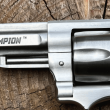



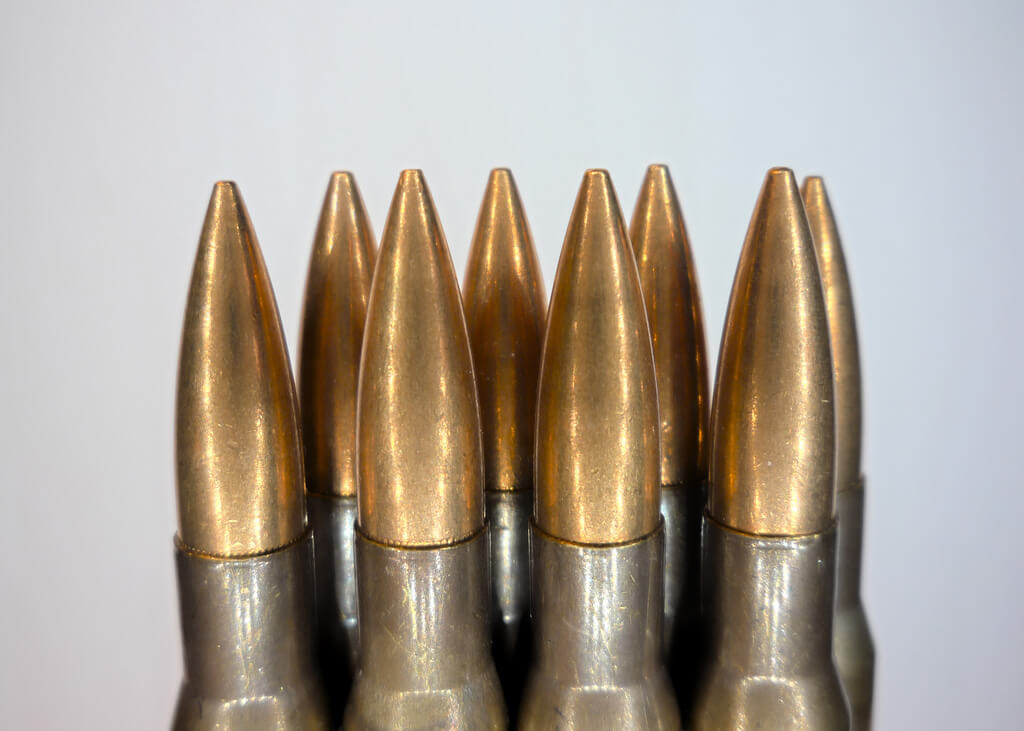
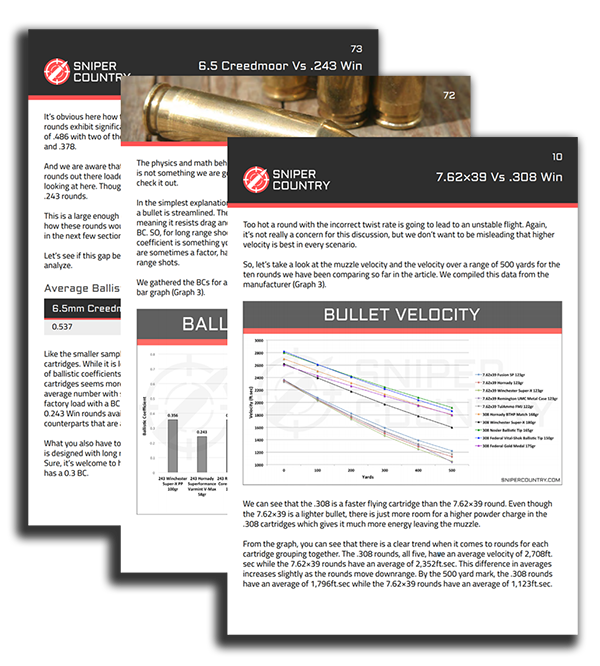

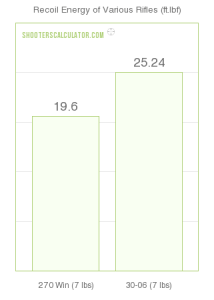
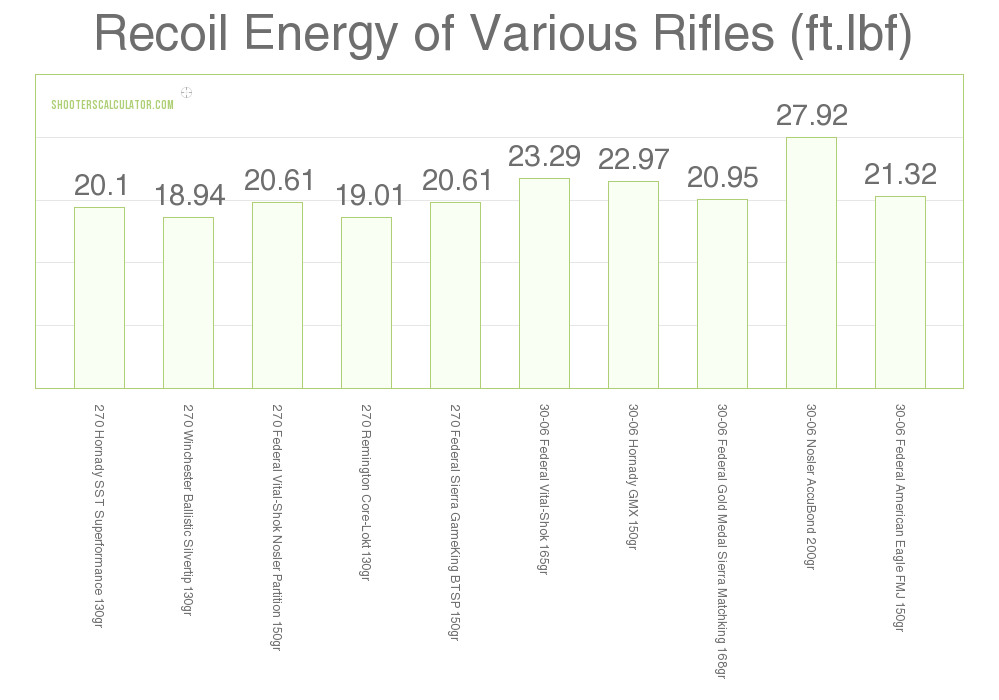

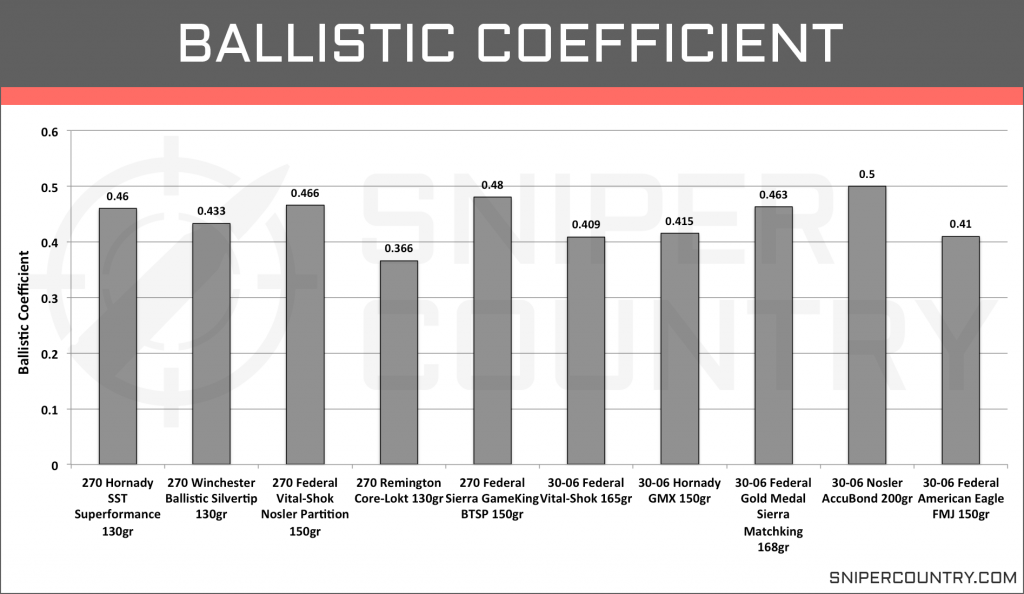
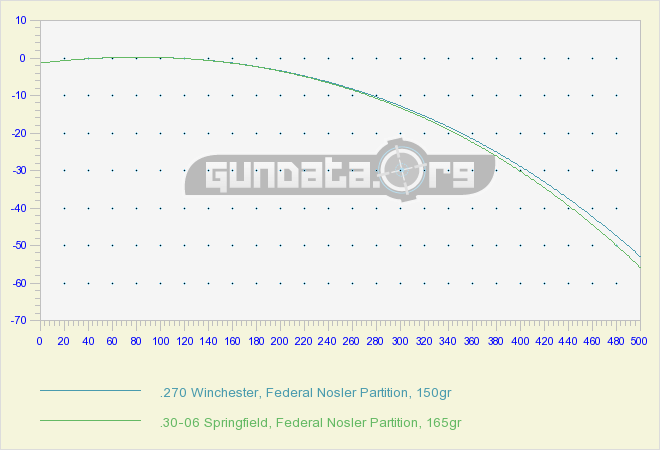
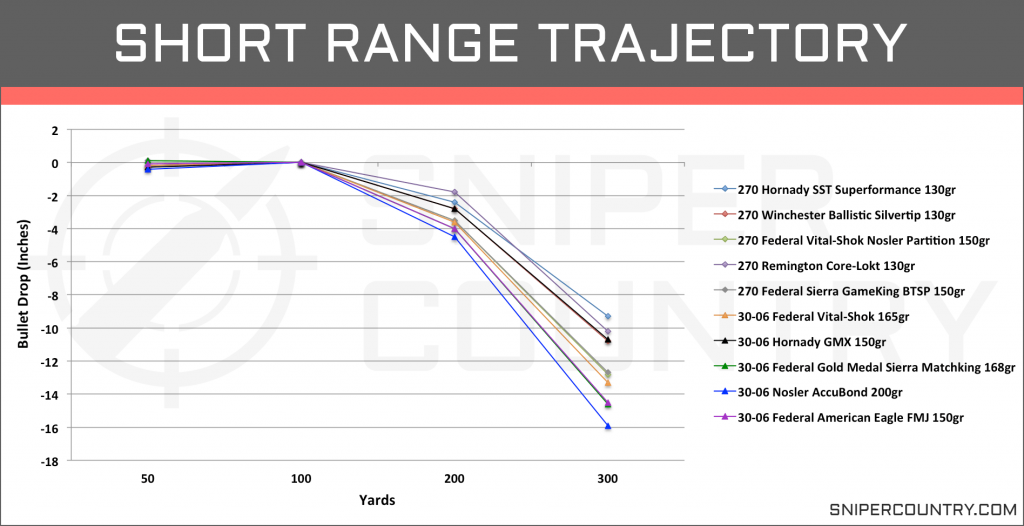
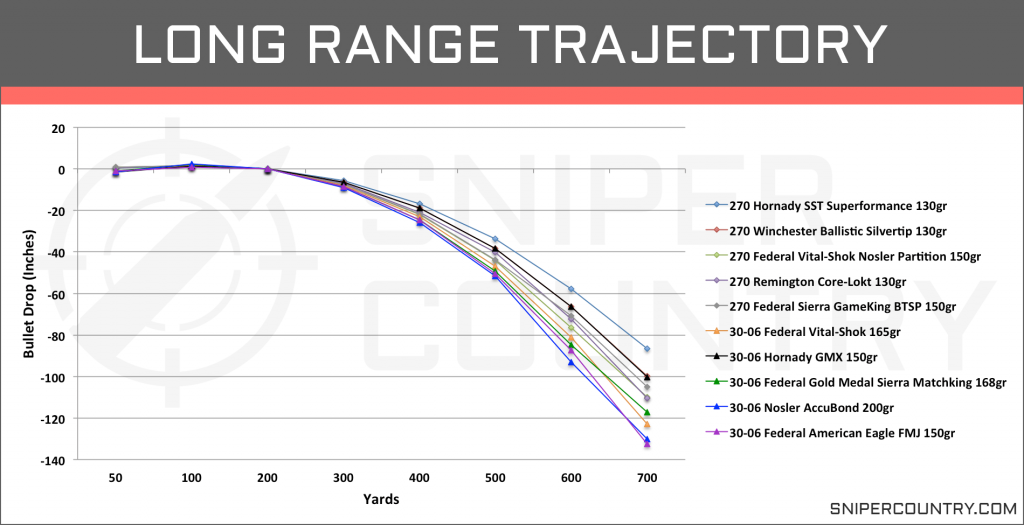
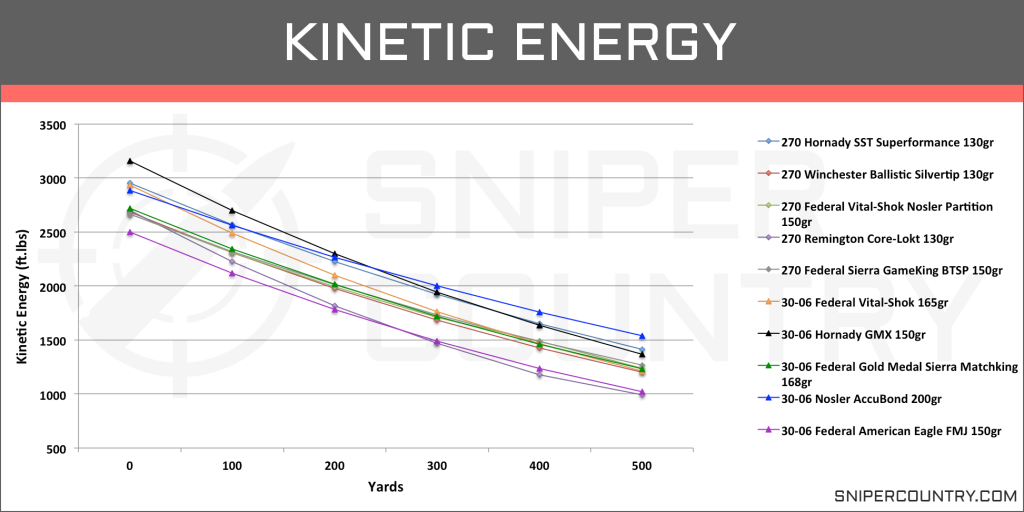
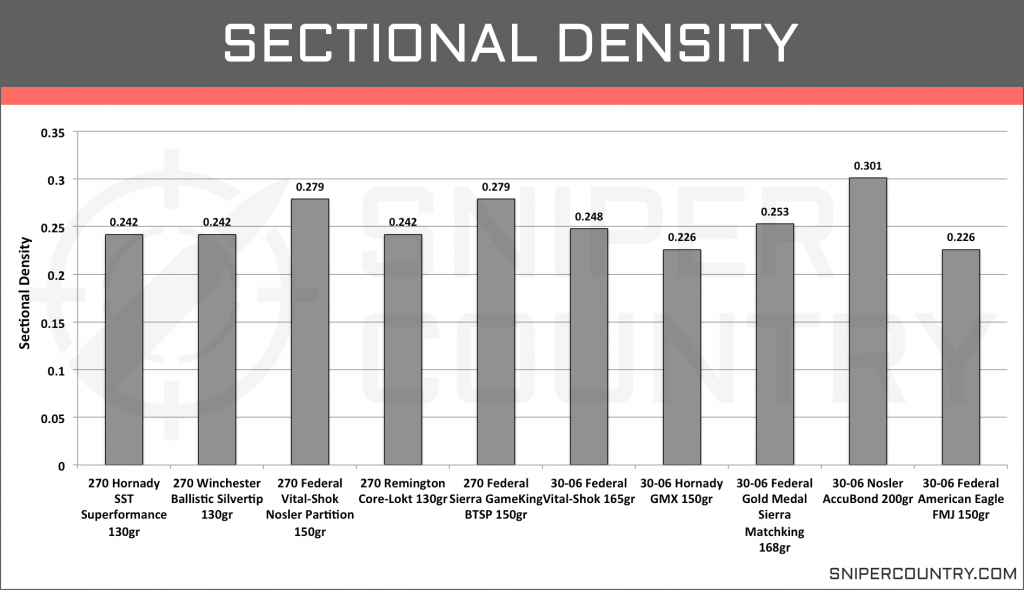
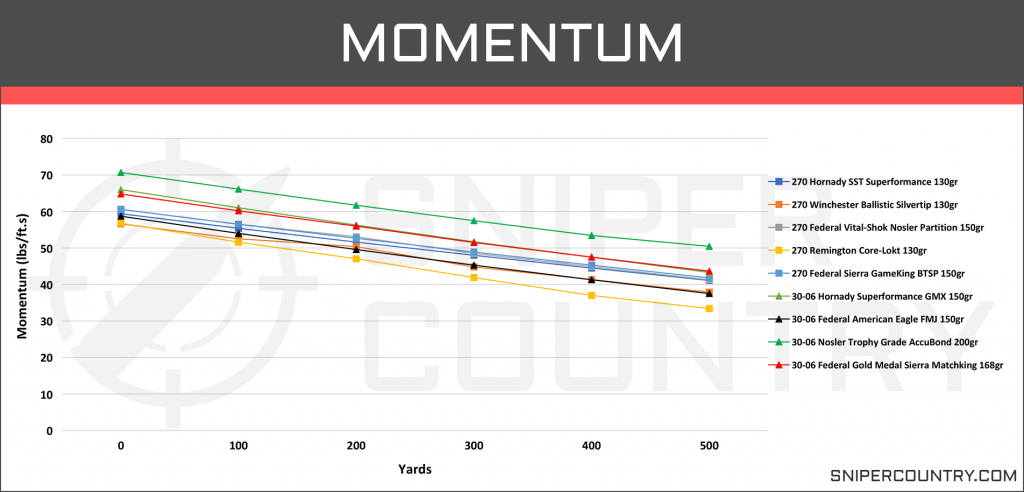

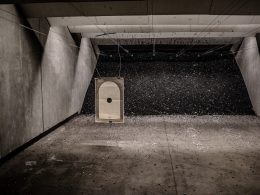
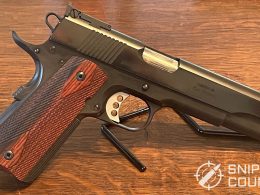
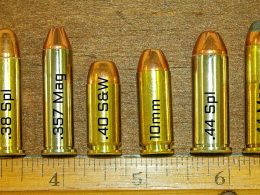
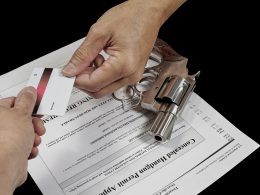
Excellent article and a lot of fun to read especially if you enjoy the intricacies of ballistics. The author of this did a great job and I hope they continue the great work
If only all gun owners could read this article-there would be so much more time for real things!!
Awesome comparison. I’ve been shooting for 40 something years with great success a Remington ADL .30-06 handed down to me from my dad when he purchased a .270. The terrain has ranged from West Texas open spaces to East Texas piney woods utilizing shooting lanes up to 200 yards. The wildlife has ranged from Whitetail deer to feral hogs weighing from 80 lbs to 300 lbs. I’ve used nothing more than the Remington 150 grain Core-Lokt Ammunition. The only shot I’ll take for the larger feral hogs is at the head or neck due to the massive armor located on the shoulder. I’m considering purchasing another rifle only because on the ADL you have to bolt out each bullet to unload the rifle as opposed to other models with a floor plate to allow dropping all the bullets. More of a convenience and from a safety aspect of bolting out each bullet therefore the potential of an accidental firing a bullet which in fact happened to me when I was a teenager. It scared the crap out of me as I must have pulled the trigger. Thank God my dad trained me vigorously to always treat a firearm as loaded ready to fire therefore I had the rifle pointed away into the sky. Until this day when I unload my rifle or any other firearm I think of that incident. All that being said I was considering buying either another .30-06 or .270. After reading this article helped me to decide to stay with a .30-06 being my shooting distance ranges from 50 yards to very seldom to 300 yards. I would entertain the .270 if I were to hunt terrain where I would stretch my shots futher than 300 yards due to the flatness the .270 offers. Of course it’s all relevant to the different types of ammunition you choose. NOW…. will I purchase another .30-06 model? Not sure but I will replace the current 20 year old Nikon scope that has served me very well for one that provides better lighting in low light situations. As we get older more light is your friend. Again… great read. Sure helped me.